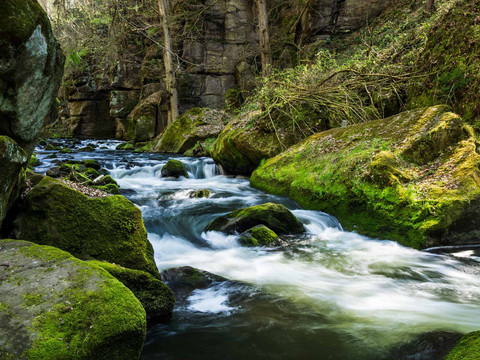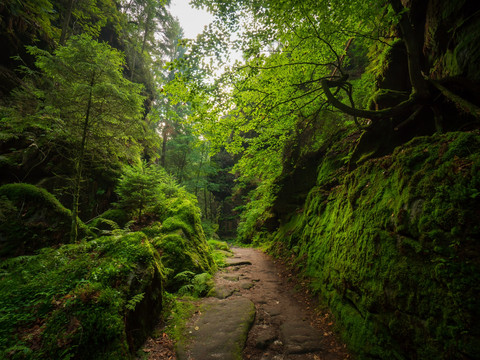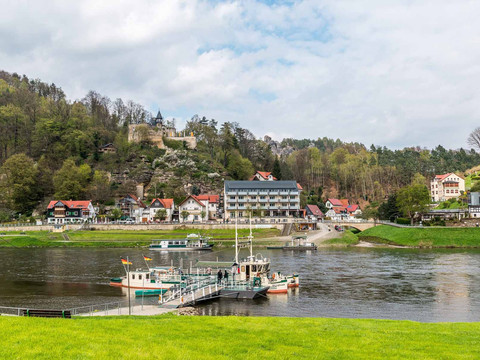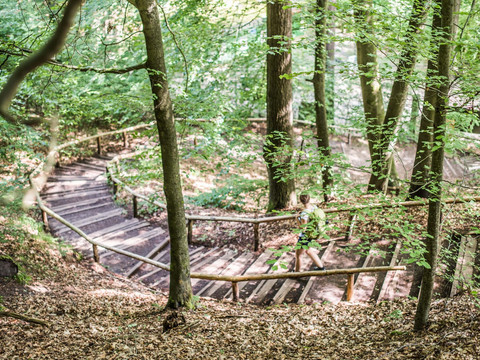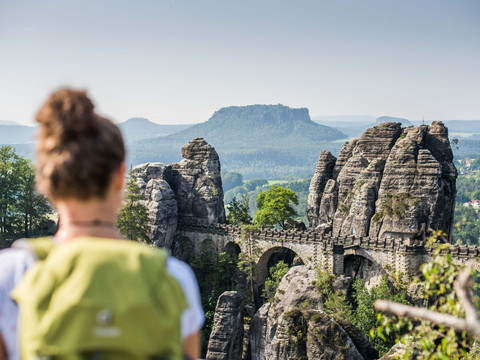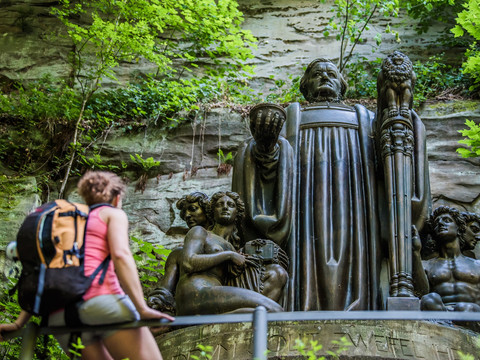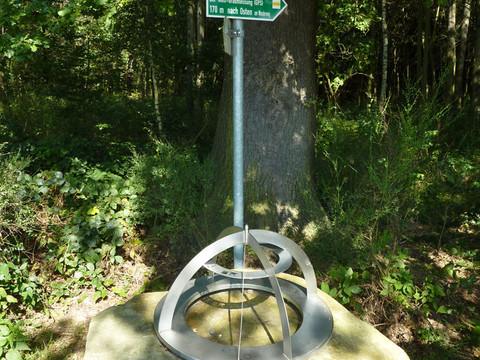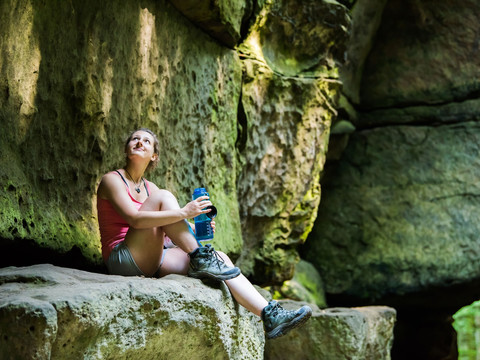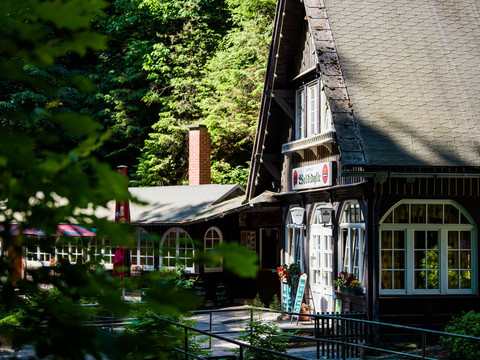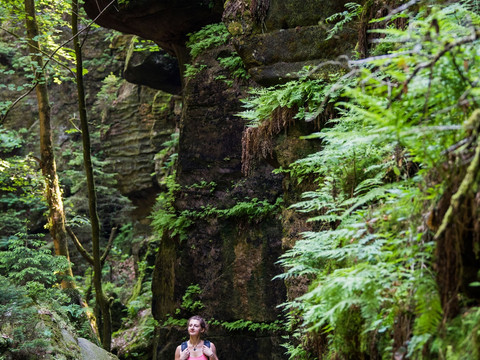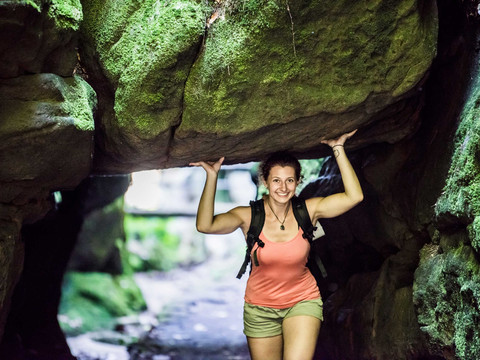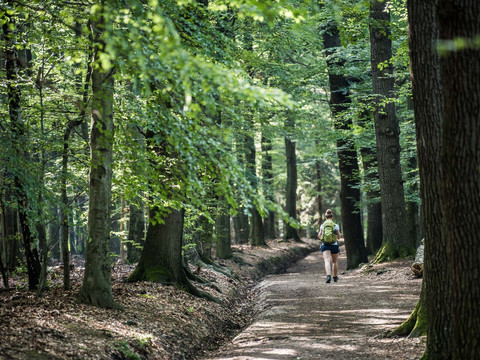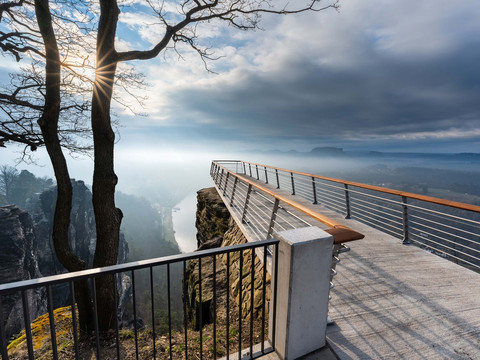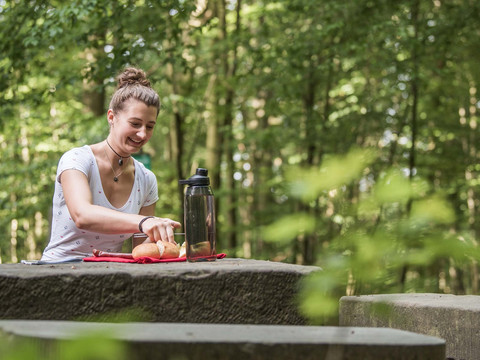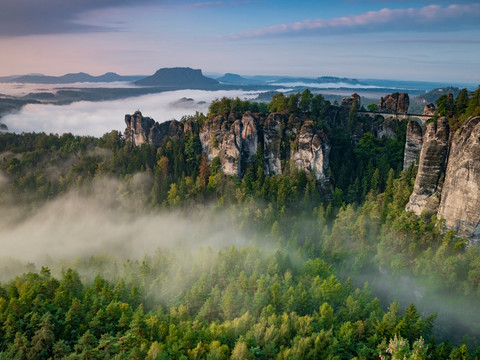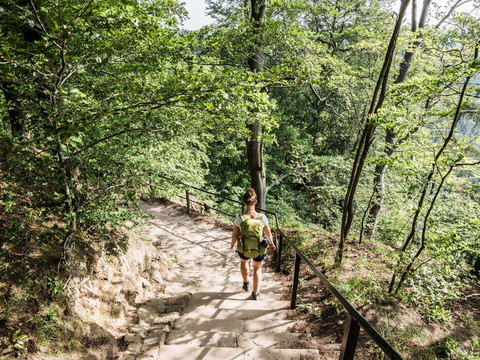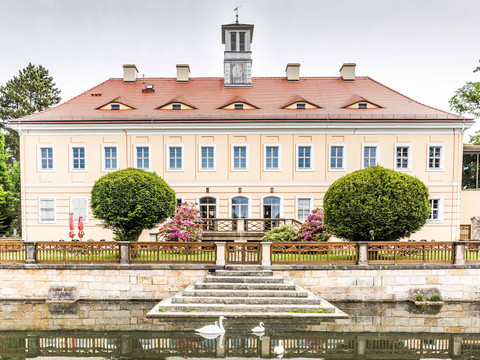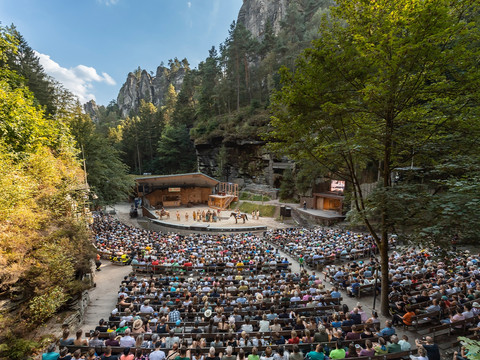In the footsteps of Carl Maria von Weber through the Liebethaler Grund and the Uttewalder Grund to the Bastei in the spa town of Rathen Route: Jagdschloss Graupa - Liebethaler Grund - Lohmen - Coordinate Stone - Uttewalder Grund - Höllengrund - Bastei - Felsenbühne Rathen - Spa town of Rathen
Since the mid-18th century, Saxon Switzerland with its incomparable landscape has been a popular destination for poets, painters, and musicians. The baroque era was replaced in the 19th century by romanticism, where emotion and passion dominated. On June 24, 1818, Carl Maria von Weber undertook a hike from Lohmen through the Uttewalder Grund to the Bastei starting at 7:00 a.m. On this route, one traverses Weber's wild romantic valleys, which offer a few surprises, and enjoys magnificent views at the same time.
The tour starts at the Richard Wagner sites in Graupa. Here, operatic history was made in the summer of 1846. A three-month summer vacation brought Richard Wagner, conductor at the Royal Court Theater in Dresden (today's Semperoper), to Graupa. He revered Carl Maria von Weber his whole life as one of his great role models. Especially Weber's opera "Der Freischütz" deeply impressed Wagner – he saw it as the beginning of an independent German opera tradition. Wagner adopted Weber's romantic sound language, the connection of nature, folk tales, and music, and developed his own style of music drama from it.
The admiration went so far that Wagner actively cared for Weber's legacy: in 1844 he organized in Dresden the solemn transfer of Weber's remains from London to Dresden, where Weber originally wished to be buried. Wagner himself gave a widely noted speech honoring Weber as the "father of German romantic music." Thus, Weber stands at the beginning of the development that Wagner brought to completion – from romantic opera to musical drama. Wagner saw himself as the successor and finisher of what Weber had initiated.
In Graupa, the residential house and Jagdschloss offer impressive insights into Richard Wagner's life, work, and sound world – multimedia and family-friendly. In the historic Lohengrin House, the living and working rooms from the summer of 1846 are faithfully furnished. Sound stations and listening options convey impressions of the composition of the opera "Lohengrin." The adjacent Jagdschloss shows a modern exhibition on Wagner's time in Saxony, his musical influences, and the development of the total artwork.
From Graupa, the route continues toward Liebethal at the beginning of the first stage of the Malerweg. A fairytale valley, a theatrical monument, a dilapidated mill: already in the overture the Malerweg shows itself as a romantic! In Pirna-Liebethal, the entrance to the Liebethaler Grund is located. Up to the Daubemühle, it follows the clear little river Wesenitz. A surprise along the way is the imposing Richard Wagner monument, created in 1933 by Richard Guhr. Richard Wagner himself was here several times. The Lochmühle, where he wrote parts of Lohengrin in summer 1846, is just a few steps further. At the Daubemühle, the Malerweg crosses the Wesenitz again and leads uphill to Mühlsdorf. Along the Alte Lohmstraße and later at the forest edge, it continues to the Coordinate Stone 51° N 14° E. Querweg, Brückenwaldweg, and Schleifgrund lead down again into the shady coolness of a valley – this time into the Uttewalder Grund with the legendary rock gate.
Rocks also line the path up to the Bastei. Here we briefly leave the Malerweg and ascend on a short path via the Höllengrund to the Bastei. With its particularly impressive landscape, the Bastei area has always offered a wealth of artistic motifs. Caspar David Friedrich also immortalized it in some of his works. After the ascent over the Höllengrund, we reach the resting place "Stone Table" again on the Malerweg and follow from here the Fremdenweg to the famous Bastei. A wealth of views is offered here. One should not miss the Ferdinandaussicht and the viewing platform above the Bastei Bridge. The path then leads down to the spa town of Rathen via the Malerweg. A visit to the Felsenbühne Rathen to conclude this tour is highly recommended. The Felsenbühne Rathen is considered one of the most impressive natural stages in Europe – and is closely connected to Carl Maria von Weber. Especially his opera "Der Freischütz," regarded as the epitome of romantic German opera, has been performed here for decades. The wild rocky landscape and the mystical forests around Rathen form a perfect backdrop for the Wolfsschlucht scene, which seems made for this place. Thus, Weber's music is uniquely united with nature here – an experience that immediately transports one into the world of romanticism.
